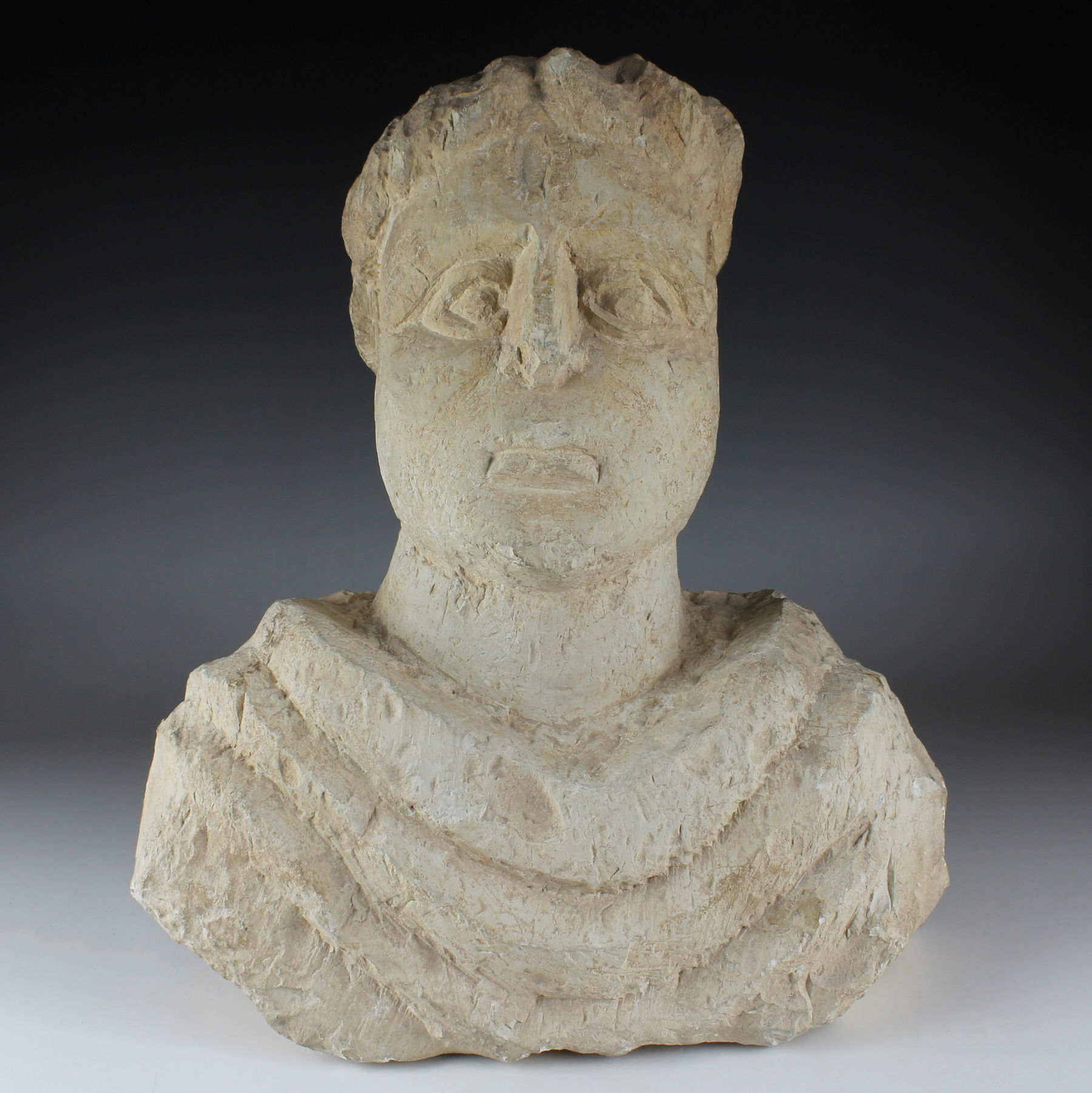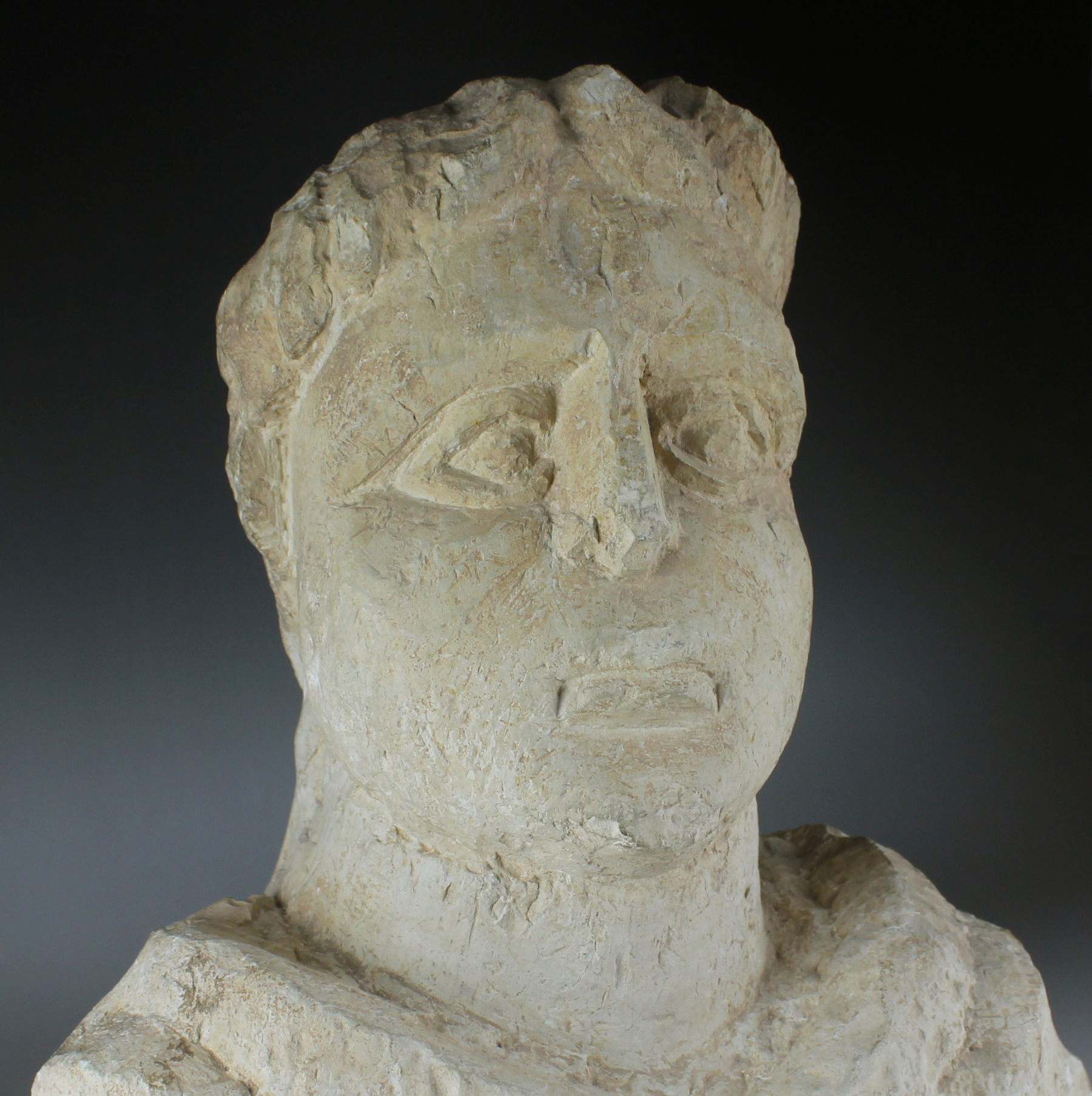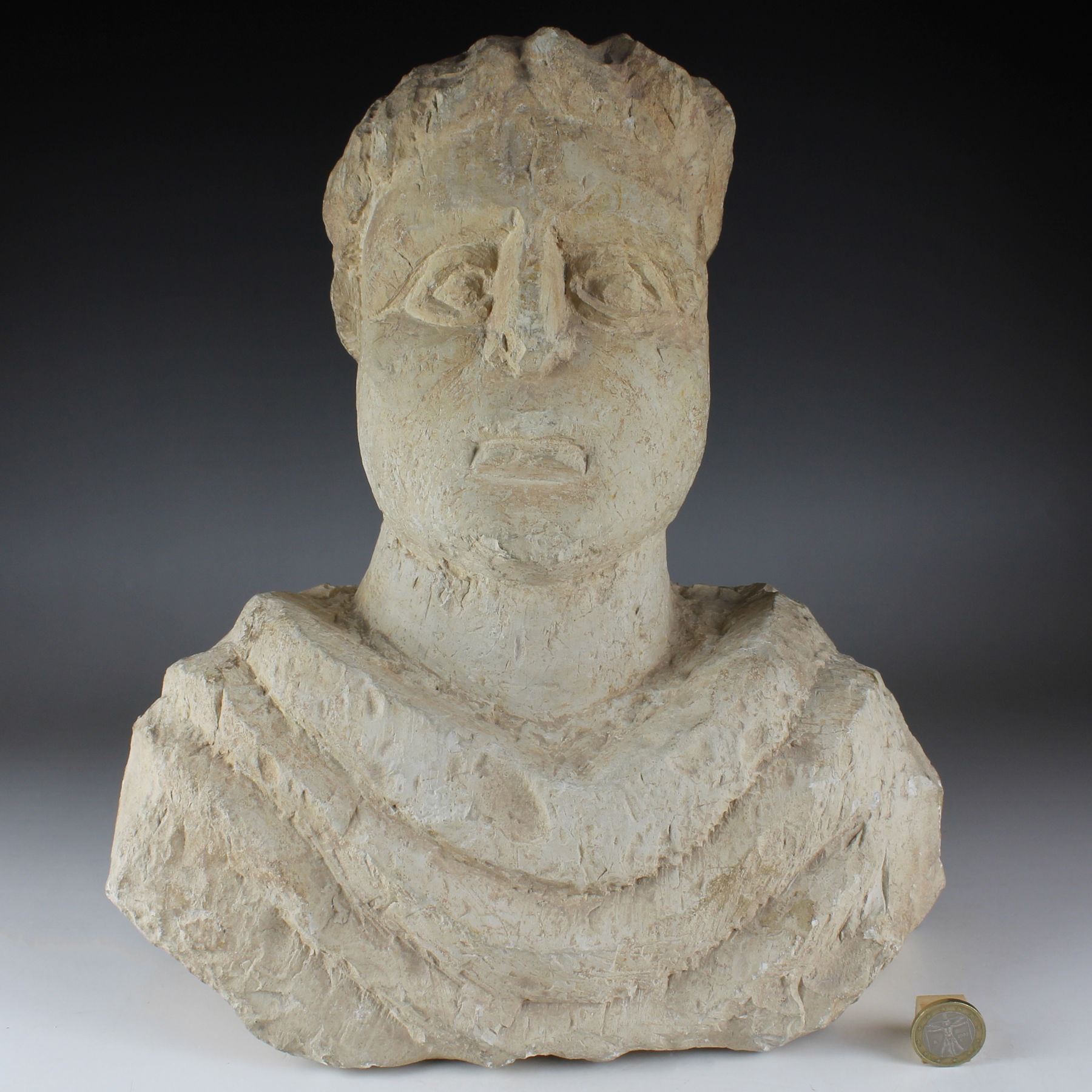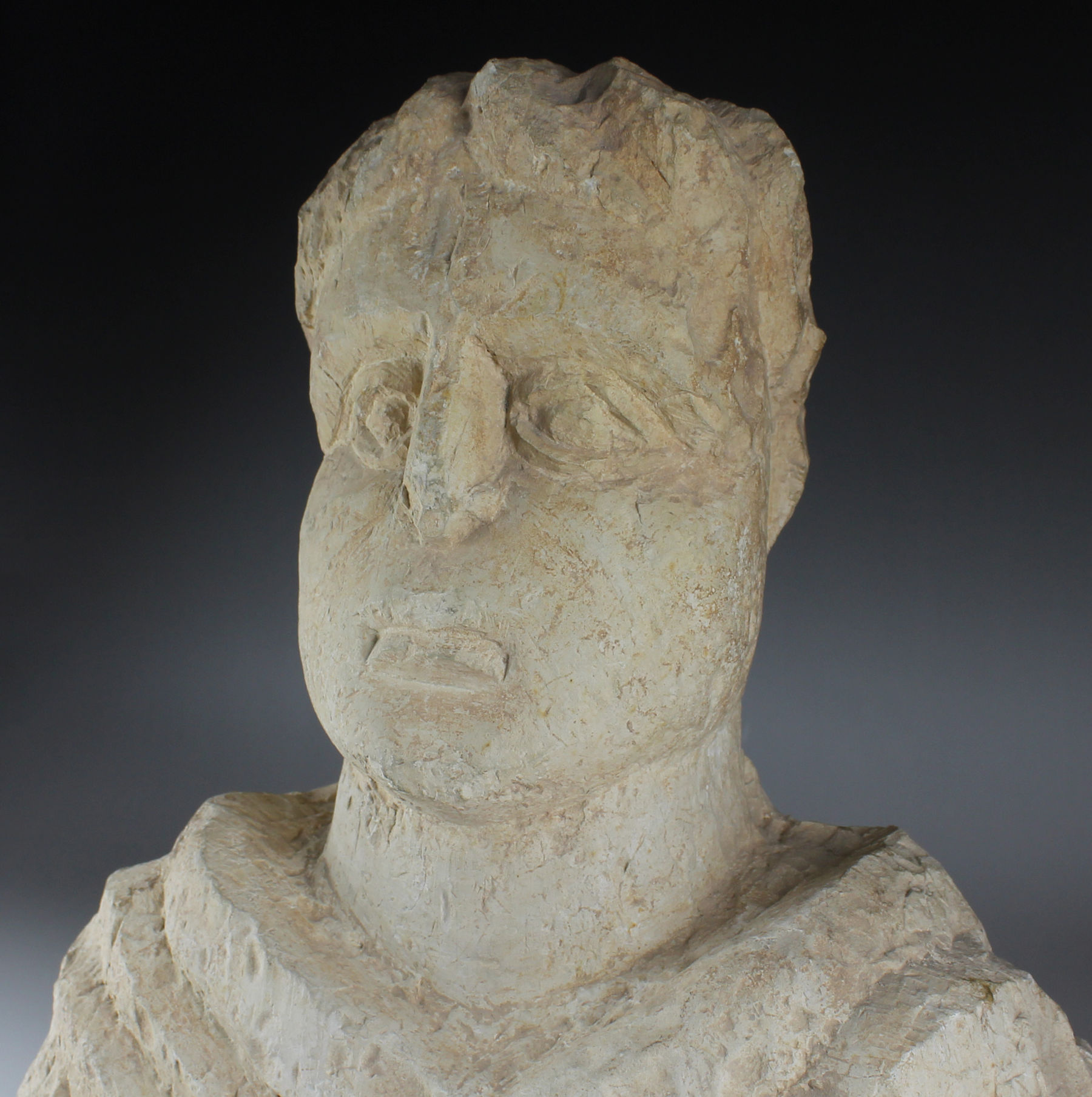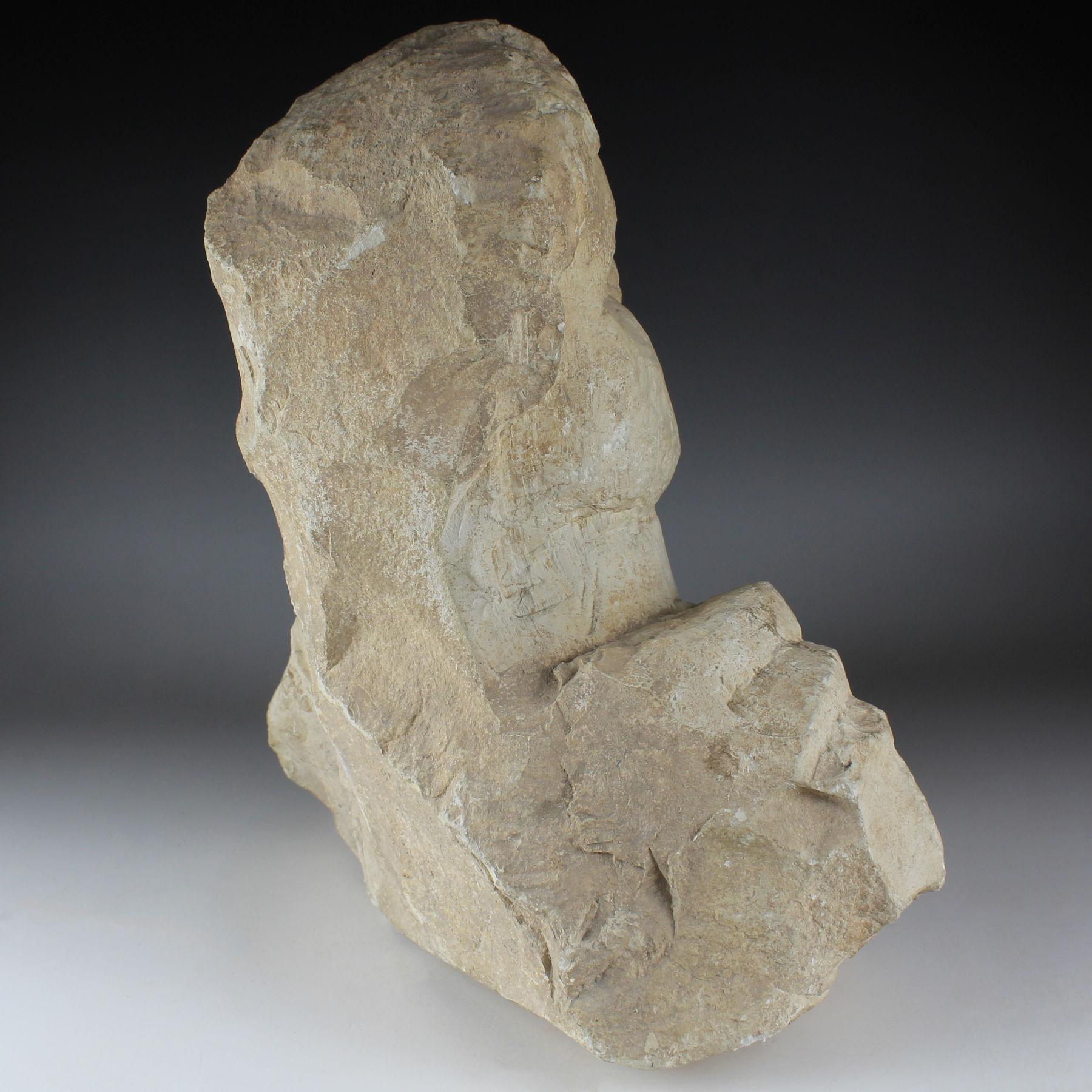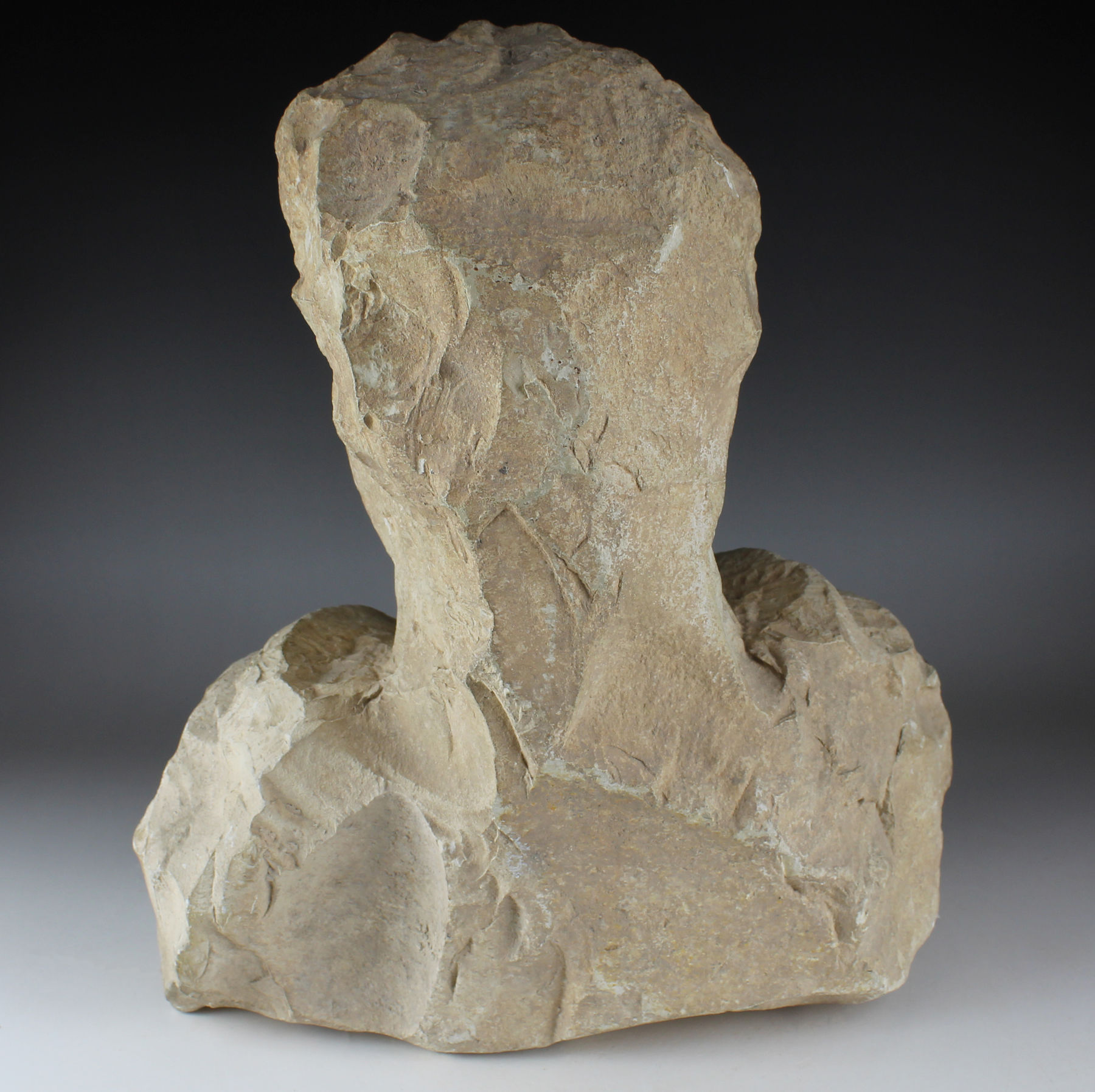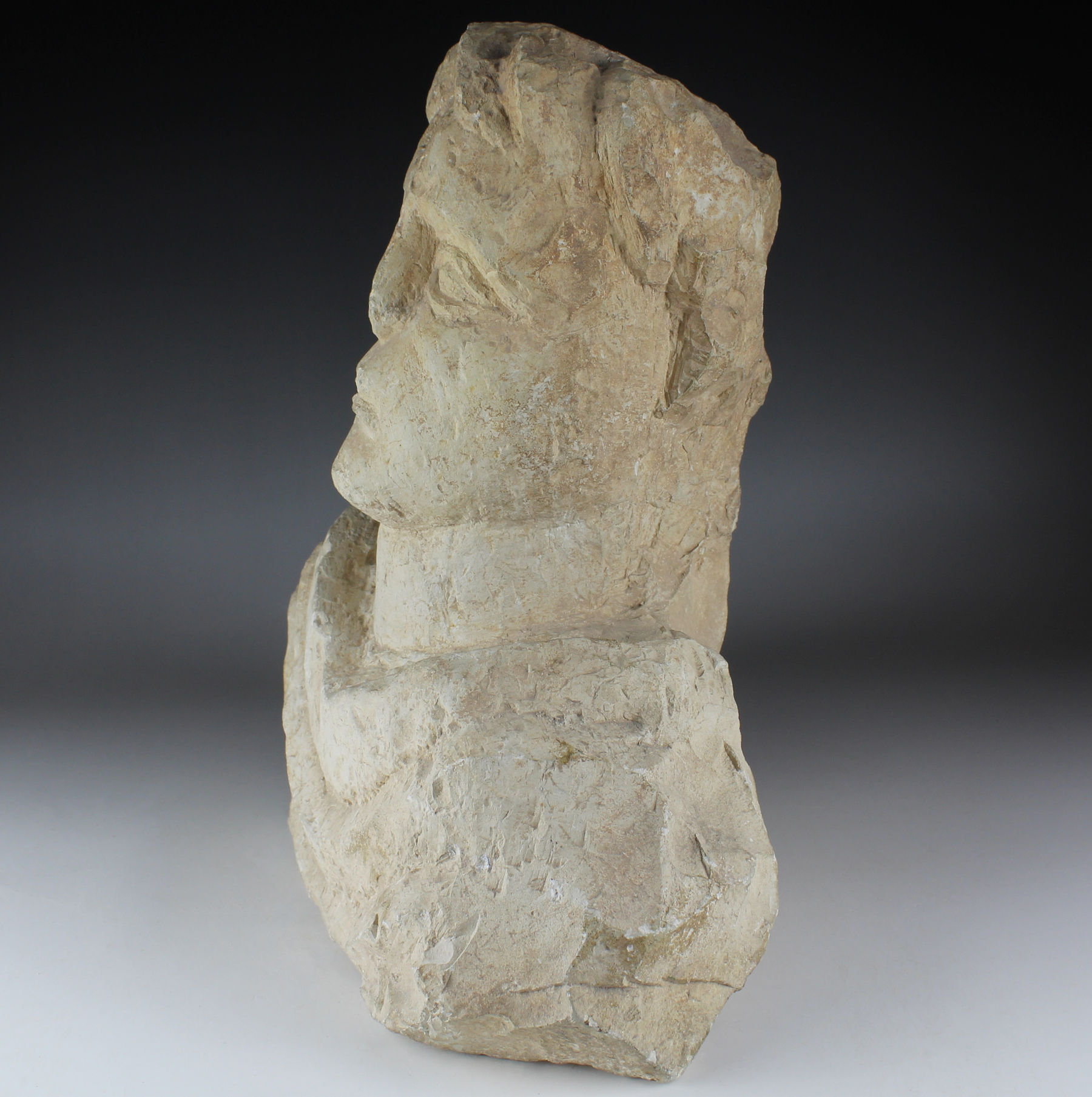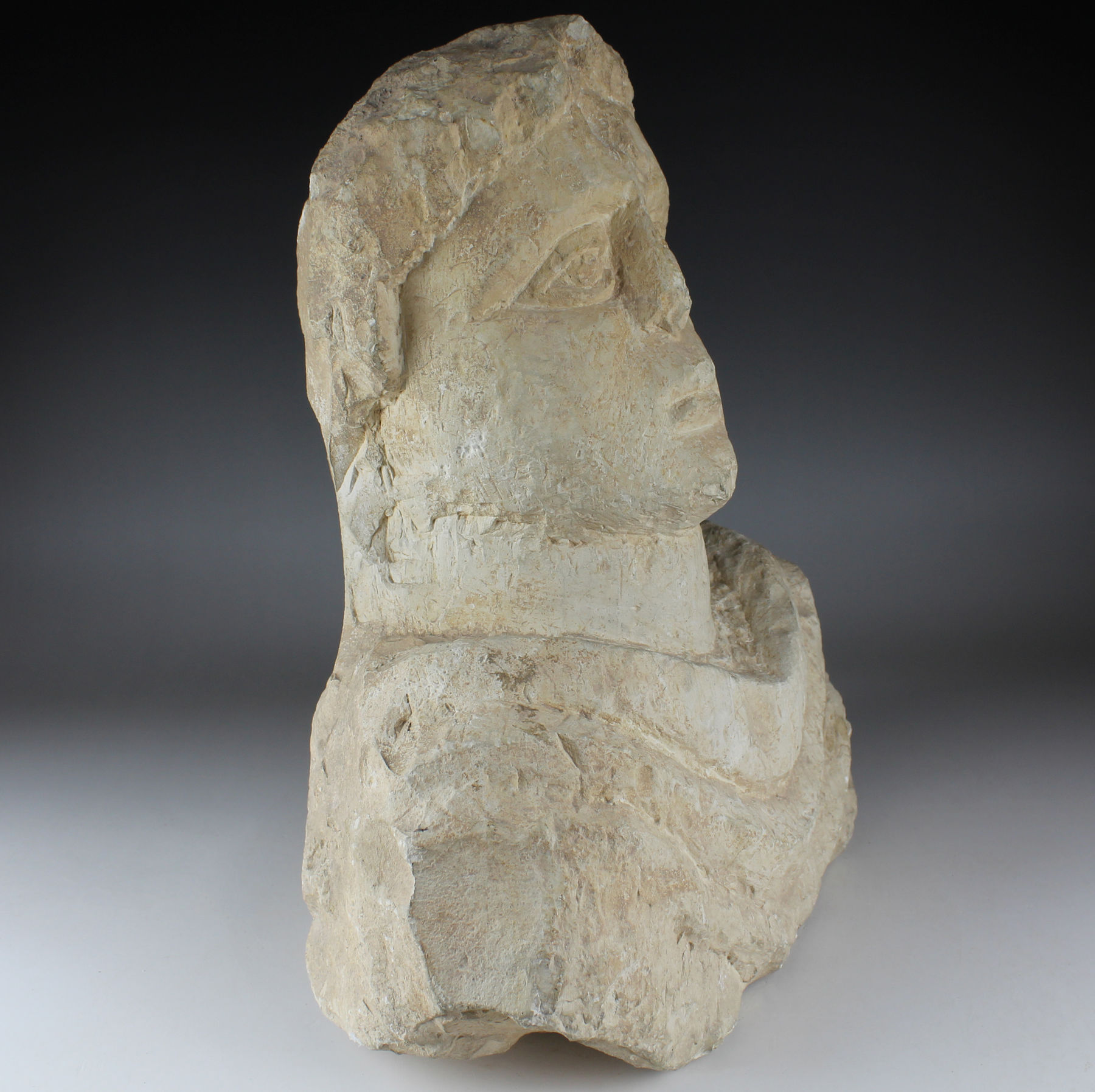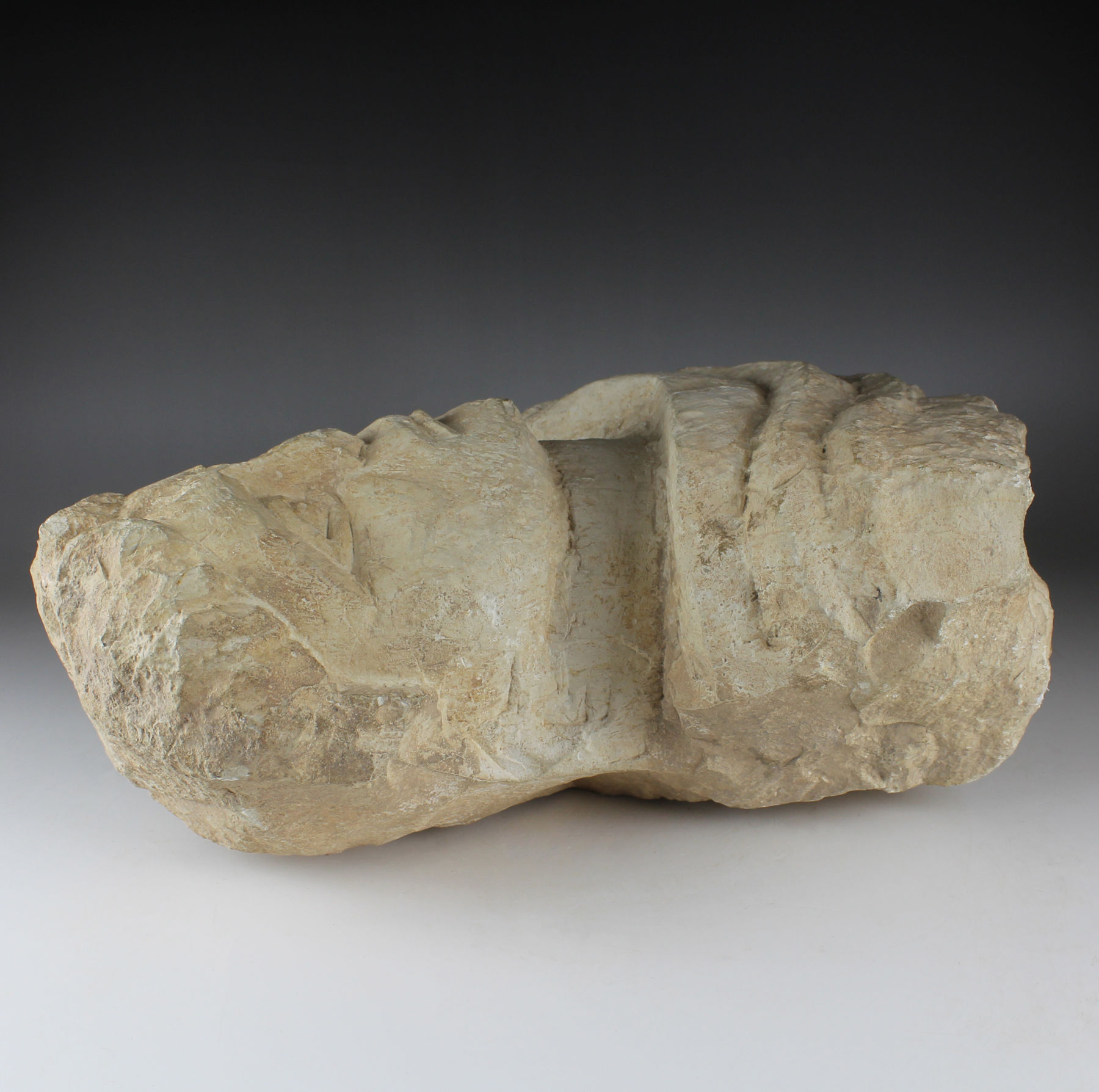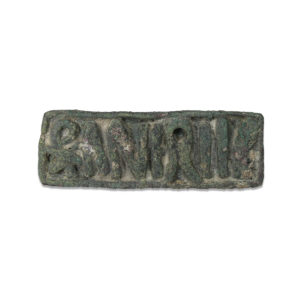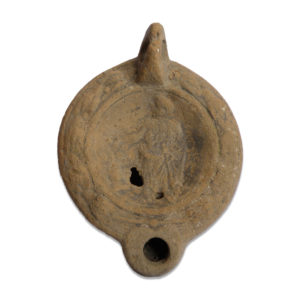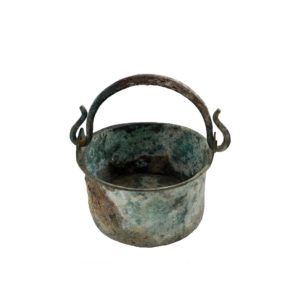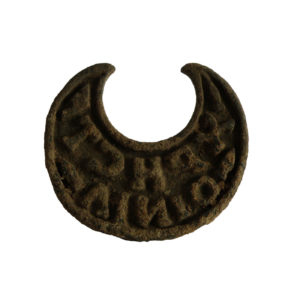Description
| ITEM | Funerary bust of a man |
| MATERIAL | Limestone |
| CULTURE | Roman, Beth-Shean / Sebaste |
| PERIOD | 3rd Century A.D |
| DIMENSIONS | 325 mm x 280 mm x 153 mm |
| CONDITION | Good condition |
| PROVENANCE | Ex American private collection, David Hendin. Ex Shraga Qedar, Jerusalem (1988) |
| PARALLEL | THE ISRAEL MUSEUM, JERUSALEM, Accession number: 69.20.581, 69.20.584, 69.20.583 |
Stone funerary busts (protomae) of men and women of various ages appeared in Eretz-Israel during the Late Roman era (2nd-3rd centuries CE). In most cases the depiction is schematic, although in some there has been an attempt to create a likeness. Some of these works also carry names, of Greek, Latin, or Semitic origin, and even the age of the deceased. However, this does not reveal the ethnic identity of the dead because, at that time, it was the general custom to give Greek or Latin names.
These carved likenesses of the dead, including their clothing and hairstyles, display the styles that prevailed mainly in the eastern provinces of the Roman Empire. After the conquest of Eretz-Israel by Alexander of Macedon in 332 BCE, Graeco-oriental (Hellenistic) styles became customary among the population, particularly in the Hellenistic cities. Men and women alike are usually depicted wearing tunics, often with a covering garment. The women’s hair is dressed in a variety of styles, sometimes embellished with jewellery. The men’s hair is simpler, short or full, sometimes with a beard and/or a moustache.


